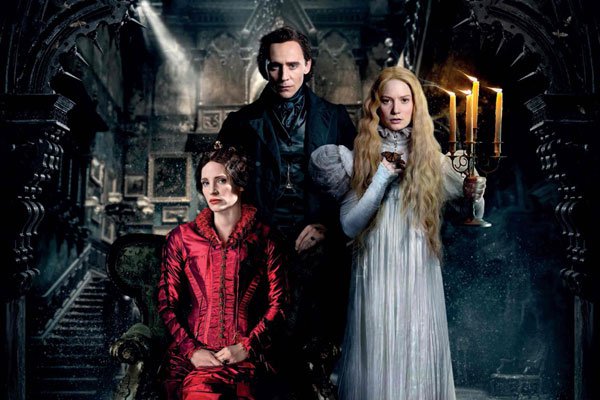“He’s back!” were the words in my mind when I eagerly perched myself in the theater and watched Guillermo del Toro’s latest terrifying masterpiece, “Crimson Peak.”
Of course when I write these words, I’m referring to the revival of del Toro’s cinematic roots when he rekindles the aesthetics seen in many of his early Spanish films like “Cronos” (1993) and the critically acclaimed masterpiece, “Pan’s Labyrinth” (2006).
“Crimson Peak” is as mystifying and intriguing as the title itself. Though del Toro claims in his interviews “It is not a horror film,” the movie definitely plays the part. If a character getting his face pounded 10 times into a bathroom sink isn’t horrifying, then I don’t want to know what is.
The movie begins in the whimsical setting of early 20th century Buffalo, New York, and progresses to England where most of the eerie horrors will occur.
We meet a young Edith Cushing (Mia Wasikowska), who frequently encounters the spirit of her dead mother. The mother staggers towards the daughter in haunting yet beautiful visuals whispering, “Beware of Crimson Peak” before vanishing. The artistic application of various costumes and makeup make scenes like this so haunting you may even forget it’s a movie.
Following this sequence we see Edith, now an aspiring novelist, scribbling ghost stories whenever she can.
One day an eager businessman named Thomas Sharpe (Tom Hiddleston) comes to America and finds her literary works interesting. This action sets the gothic romance interplay between the two, which fundamentally drives the movie. However, del Toro leaves clear indications Thomas is not an honest man.
After the brutal murder of Edith’s father, Thomas sweeps her back to his chilling estate in England. The audience sees the dramatic transition from the hustle and bustle of a quaint town flocked with butterflies to the cold creaky mess of a mansion filled with dying moths. This film adopts a wonderful color palette that is extremely appealing to the eye.
If there’s criticism, however, it’s the actors and some aspects of the plot are the weakest components to the film. This was not surprising after watching some of del Toro’s latest big-budget Hollywood films such as “Pacific Rim,” (2013) which had similar plot deficiencies. The plot was in no sense bad; it just needed more fuel to drive forward.
The use of iris transitions attempt to root back to an early use of cinematography. Unfortunately, these practices can be distracting to modern audiences and are somewhat overused.
The feature aims to revive the presence of well-thought horror cinema such as “The Shining” (1980) and “The Exorcist” (1973) with visual aesthetics that are a must-see.
This movie brings us to a world where ghosts do in fact exist and establishes the ideologies that spirits are not the villains we should fear, but rather the people who create them.





Morgan Freeman • Dec 9, 2015 at 4:13 pm
Good God and all that is almighty, this shit is bananas! I was waiting for just a piece, and you delivered.